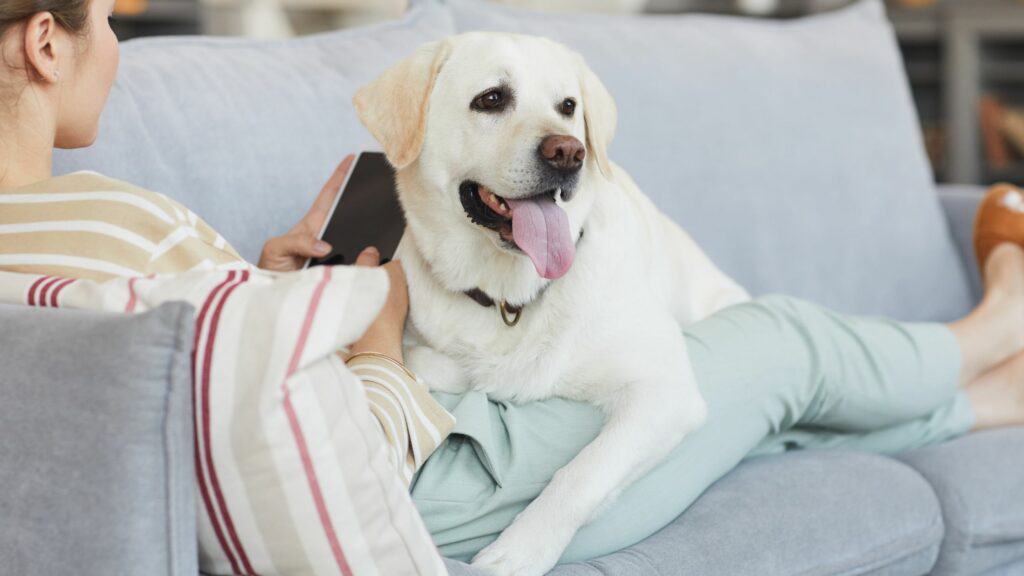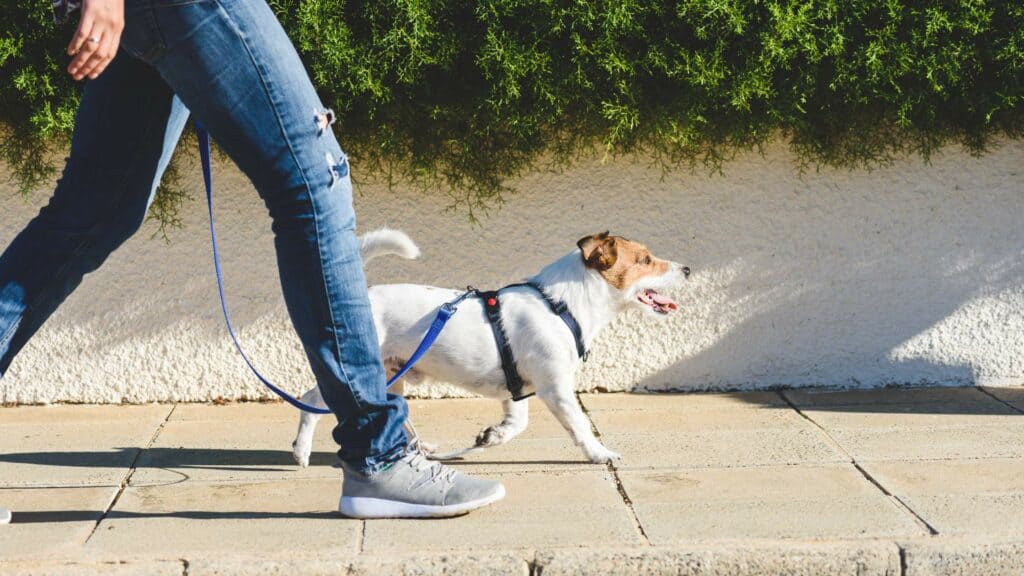What if I told you that everything you know about dog separation anxiety is wrong? But don’t worry, that’s good news!
My name is Kristina Trank Donovan, and I am a Certified Professional Dog Trainer – Knowledge Assessed (CPDT-KA) and Certified Separation Anxiety Trainer (CSAT) with over 15 years of experience working with dogs. Over the years, I have heard many people voice their opinions on dog behavior and how to “fix” a dog. But there is no area of dog behavior that has more misconceptions than Separation Anxiety.
Did you know separation anxiety affects over 15 million dogs and their owners in the U.S.? Dog separation anxiety is a real and challenging condition that many pet owners face leading to confusion and misunderstanding. Let’s debunk some of these prevalent myths to shed light on the truth behind this common issue.

MYTH 1: YOU CAUSED YOUR DOG’S SEPARATION ANXIETY
Contrary to popular belief, showering your dog with affection doesn’t cause their separation anxiety. During the lockdown, many found solace in the cuddles and companionship of their pets. These moments of closeness did not give your dog attachment issues. Instead they nurtured a profound bond between you and your pup, which is undoubtedly a wonderful thing!
It’s crucial to understand that separation anxiety is similar to a phobia so can’t be caused by positive attention. If your dog is experiencing separation anxiety, don’t hold back on the cuddles! It’ll provide them with a sense of security and reassurance, which are invaluable in managing their anxiety.
MYTH 2: SEPARATION ANXIETY IS NOT TREATABLE
Treating separation anxiety in dogs may seem daunting, especially when the problematic behavior manifests primarily when the dog is alone. However, it is treatable.
Working with a dog trainer will give you the tools as well as a step by step plan to make meaningful changes that will improve behavior. Plans can include avoiding triggers, managing their environment and in some cases medications – which sometimes is a first step, not the last step.
Since many changes are implemented by you in the home, separation anxiety has the flexibility to be virtual. Sessions set up and lengths can be customized to fit you are your dog’s needs, making it easier to tackle their anxiety step by step.

MYTH 3: DOGS ARE BEHAVING OUT OF SPITE
Our canine companions don’t operate with a moral compass; they don’t understand concepts of right or wrong in the same way we do. So, when you come home to find your dog cowering and see that they’ve torn something up or had an accident, you have to realize that their behavior isn’t driven by a sense of guilt or understanding that they’ve done something wrong. Instead, their reaction is often rooted in fear of punishment due to past experiences.
Dogs are incredibly perceptive to patterns and cues in their environment, including the reactions of their human guardians. Any destructive behavior that occurs when they’re alone isn’t motivated by spite or malice. It’s a result of panic and anxiety, often stemming from being separated from their favorite human (you!).
Understanding this is key to effective training and behavior management. Trying to punish the behavior out of your dog won’t address the root cause of their distress. In fact, it can worsen their anxiety and lead to further destructive behaviors. Instead, focus on positive reinforcement, creating a safe and comfortable environment, and addressing any underlying separation anxiety through training and gradual desensitization techniques.
MYTH 4: GETTING ANOTHER DOG WILL HELP WITH SEPARATION ANXIETY
Some people think getting another dog can help with separation anxiety, but it’s not that simple. While having a buddy around might make some dogs feel better, the main issue is being left alone by their human guardian.
Before getting another dog, careful consider if it’s the right decision based on your dog’s specific needs and issues. While a second dog can provide companionship, it’s important to work separately on addressing separation anxiety with training and patience.

MYTH 5: GETTING MORE EXERCISE WILL FIX SEPARATION ANXIETY
Making sure your dog gets enough exercise is extremely important (especially if you have a working breed). However exercise is part of a solution not the whole solution. Exercise alone will not be as effective unless combined with other tools and methods.
Back in the day, I used to walk my dogs for 60 to 90 minutes before leaving them alone. Despite a good workout, I found my dog with separation anxiety on the doggy cam panting and howling from the moment I left the house. This shows that exercise alone isn’t enough to solve separation anxiety. It’s important to look deeper and find ways to help your dog feel calm and secure when they’re home alone.
With the support of knowledgeable professionals and assistance, we pave the way to a happier, more relaxed pup.
Getting Help
My Separation Anxiety program uses systematic desensitization to safely expose dogs to absences while keeping them from experiencing any panic. The program involves weekly plans and meetings to guide you through the training and desensitization process. The goal is to keep your dog feeling safe and to prevent destructive behaviors. The program is virtual so regardless of where you are, I can help you.
To learn more, book a Discovery Call with me.